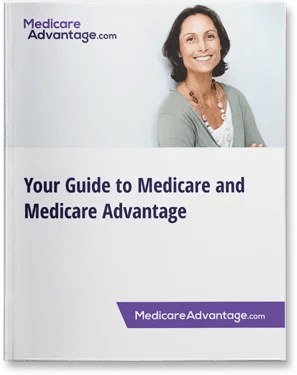There are 4 primary parts of Medicare, which include some private Medicare policy options. Another type of private Medicare policy is Medicare Supplement Insurance (also called Medigap).
In this guide, we detail the 2025 Medicare costs for each of the following types of Medicare coverage:
Compare plans today.
Speak with a licensed insurance agent
2025 Medicare costs at a glance
There are several types of costs that may be associated with each type of Medicare plan.
- Premium
A Medicare premium is the amount that you pay in order to maintain your coverage. Medicare premiums are often paid on a monthly basis.
- Deductible
Your Medicare deductible is the amount that you must pay out of pocket for covered services before your Medicare coverage kicks in.
- Coinsurance
Coinsurance is the percentage of your healthcare charges that you pay once your deductible is met (example: 20 percent).
- Copayments
Copayments are specific amounts you pay for a healthcare service after your deductible is met (example: $20).
Depending on the type of Medicare coverage you have, there may be other costs that you could potentially face. Keep reading to learn more.
We offer plans from Humana, UnitedHealthcare®, Anthem Blue Cross and Blue Shield*, Aetna, HealthSpringSM, Wellcare, or Kaiser Permanente.
Enrollment may be limited to certain times of the year. See why you may be able to enroll today.
Compare plans today.
Speak with a licensed insurance agent
Medicare Part A costs in 2025
Medicare Part A is known as hospital insurance and helps cover:
- Hospital care
- Hospice
- Limited home health services
- Skilled nursing facility care
Part A premiums
Most people do not pay a premium for Medicare Part A, as long as they or or their spouse paid sufficient Medicare taxes while working.
- If you paid Medicare taxes for at least 40 quarters (10 years), you do not have to pay a premium for Part A.
- If you paid Medicare taxes for between 30 and 39 quarters, you will pay a premium of $285 per month in 2025 for Part A coverage.
- If you paid Medicare taxes for fewer than 30 quarters, your monthly Part A premium will be $518 in 2025.
Part A deductible
Your Part A deductible is the amount you must pay in hospital costs before Medicare begins paying its share.
In 2025, the Part A deductible is $1,676 per benefit period.
Medicare Part A benefit periods are based on how long you’ve been discharged from the hospital:
- A benefit period begins on the day you're admitted for inpatient care at a hospital, skilled nursing facility or other Medicare-approved facility.
- Your benefit period resets when you’ve been out of the hospital for 60 days.
- If you return to the hospital for another visit after 60 days has past, you would have to pay the Part A deductible again because your benefit period reset.
Part A coinsurance for hospital stays
After you meet your Part A deductible in a benefit period, you will be responsible for daily coinsurance payments for as long as you remain hospitalized:
- For your first 60 days that you are in the hospital, you pay nothing additional out of pocket for your hospital costs after meeting your $1,676 deductible.
- For days 61-90 in a hospital during a single benefit period, you pay a $419 coinsurance in 2025 for each day you are hospitalized.
- If you are in the hospital for more than 90 days during a single benefit period, you pay a $838 coinsurance in 2025 for each day you are hospitalized, for up to 60 lifetime reserve days.
Part A coinsurance for skilled nursing facility care
Medicare Part A covers skilled nursing care provided in a skilled nursing facility under certain circumstances. The 2025 Part A coinsurance amounts are as follows:
- Days 1-20: $0 coinsurance per benefit period
- Days 21-100: $209.50 coinsurance per day of each benefit period
- Days 101 and beyond: You are responsible for all costs
Medicare Part B costs in 2025
Medicare Part B is known as medical insurance and helps cover preventive services and medically necessary services that include (but aren't limited to):
- Clinical research
- Doctor’s services
- Ambulance services
- Limited outpatient prescription drugs
- Getting a second opinion before surgery
- Durable medical equipment (DME)
Part B premiums
In 2025, the standard Medicare Part B premium is $185 per month.
Most people pay the standard premium amount, but your Part B premium could be higher depending on your income. Some people who get Social Security benefits may pay less.
In 2025, individuals with reported 2023 incomes of more than $106,000 and married couples with reported 2023 incomes of greater than $212,000 have to pay more for their Part B coverage.
This increased amount is called the Medicare IRMAA, or the Income-Related Monthly Adjustment Amount.
The chart below shows what you will pay for your Part B premium in 2025 based on your modified adjusted gross income from two years prior (2023).
2025 Medicare Part B IRMAA
| 2023 Individual tax return |
2023 Joint tax return |
2023 Married and separate tax return |
2025 Part B premium |
|
$106,000 or less
|
$212,000 or less
|
$106,000 or less
|
$185.00
|
|
More than $106,000 and up to $133,000
|
More than $212,000 and up to $266,000
|
N/A
|
$259.00
|
|
More than $133,000 up to $167,000
|
More than $266,000 up to $334,000
|
N/A
|
$370.00
|
|
More than $167,000 up to $200,000
|
More than $334,000 up to $400,000
|
N/A
|
$480.90
|
|
More than $200,000 up to $500,000
|
More than $400,000 up to $750,000
|
More than $106,000 up to $394,000
|
$591.90
|
|
More than or equal to $500,000
|
More than or equal to $750,000
|
More than or equal to $394,000
|
$628.90
|
Part B deductible
Your Part B deductible is the amount you must pay in medical costs before Medicare begins paying its share.
In 2025, the Part B deductible is $257 per year.
Part B coinsurance/copayment
After you meet your Part B deductible, you typically pay 20 percent of the Medicare-approved amount for most doctor’s services.
Part B excess charges
Doctors who do not accept Medicare assignment can charge more than the Medicare-approved amount for a service or procedure. The difference between the amount a doctor charges and the Medicare-approved amount is known as an excess charge.
The Part B excess charge can be as much as 15 percent more than the Medicare-approved amount.
2025 Medicare Advantage (Part C) costs
Medicare Advantage (Medicare Part C) is an alternative to Original Medicare that provides the same benefits as Medicare Part A and Part B.
Medicare Advantage plans can also cover prescription drugs, and plans may also offer coverage for vision, dental, hearing and/or health and wellness programs or gym membership; for example SilverSneakers. Availability of these benefits varies, and plans offering these benefits may not be available where you live.
Original Medicare does not typically cover routine vision, dental or hearing services.
If your Medicare Advantage plan includes coverage for prescription drugs, you typically pay a coinsurance or copayment for covered drugs.
Specific prescription drug costs will vary depending on the Medicare Advantage Prescription Drug (MA-PD) plan you enroll in.
Compare plans today.
Speak with a licensed insurance agent
2025 Medicare Advantage premiums
Because Medicare Advantage plans are sold by private insurance companies, there is no standard premium like there is with Original Medicare. Premiums may vary according to plan, insurance carrier and location.
Depending on where you live, there may be Medicare Advantage plans available that feature $0 premiums, though such plans aren't available in all locations. Regardless of the Medicare Advantage premium, beneficiaries are still required to pay their monthly Part B premium.
2025 Medicare Advantage out-of-pocket maximum
Medicare Advantage have an out-of-pocket maximum, which limits how much you could pay out of pocket for care in a given year. Original Medicare does not have an out-of-pocket maximum.
2025 Medicare Part D costs
Original Medicare does not generally cover prescription drugs, with the exception of limited outpatient prescription drugs.
If you want Medicare prescription drug coverage, you can enroll in a Medicare Advantage plan that includes drug coverage, or you can enroll in a stand-alone Part D (Medicare Prescription Drug Plan) plan.
Compare Part D plans available where you live and enroll in a Medicare prescription drug plan online when you visit MyRxPlans.com.
Part D premiums
If you enroll in a Medicare Part D plan, you typically pay a monthly premium for your Part D coverage in addition to your Medicare Part B and Medicare Advantage premiums (if applicable).
Part D premiums will differ from one plan, carrier or location to another.
The average premium for a Part D plan in 2025 is $46.50 per month.1
As with Medicare Part B, some people who earn a higher income may pay a higher premium for their Part D plan. This increased amount is called the Income-Related Monthly Adjustment Amount (IRMA).
The table below shows what you can expect to pay for your 2025 Part D premiums based on your reported income in 2023.
2025 Medicare Part D IRMAA
| 2023 Individual tax return |
2023 Joint tax return |
2023 Married and separate tax return |
2025 Part D premium |
|
$106,000 or less
|
$212,000 or less
|
$106,000 or less
|
Your plan premium
|
|
More than $106,000 and up to $133,000
|
More than $212,000 and up to $266,000
|
N/A
|
Your plan premium + $13.70
|
|
More than $133,000 up to $167,000
|
More than $266,000 up to $334,000
|
N/A
|
Your plan premium + $35.30
|
|
More than $167,000 up to $200,000
|
More than $334,000 up to $400,000
|
N/A
|
Your plan premium + $57.00
|
|
More than $200,000 up to $500,000
|
More than $400,000 up to $750,000
|
More than $106,000 up to $394,000
|
Your plan premium + $78.60
|
|
More than or equal to $500,000
|
More than or equal to $750,000
|
More than or equal to $394,000
|
Your plan premium + $85.80
|
2025 Part D deductibles
Part D deductibles may vary from one plan to the next. In 2025, Part D plans cannot have an annual deductible higher than $590 for covered drugs.
Part D coinsurance/copayments
Medicare Part D plans include a drug formulary, which is a list of what drugs the plan may cover.
Medicare plan formularies are divided into tiers. Formulary tiers correspond to how much you might pay in coinsurance or copayments for specific drugs (after you meet your Part D deductible):
- Low-cost, generic drugs are typically on lower tiers.
- More expensive and brand name drugs are typically on higher tiers.
Out-of-pocket Part D costs for covered drugs are capped at $2,000 in 2025.
Part D beneficiaries can spread out payments for their out-of-pocket drug costs over the year. This will help some beneficiaries avoid high out-of-pocket drug costs during a single month
2025 Medicare Supplement Insurance (Medigap) costs
Medicare Supplement Insurance, or Medigap, helps cover some of the out-of-pocket costs that Medicare Part A and Part B don't cover, such as deductibles, coinsurance and copayments.
There are 10 different types of standardized Medigap plans available in most states. The types of costs that different types of Medigap plans are illustrated in the 2025 Medigap plans comparison chart below.
Click here to view enlarged chart Scroll to the right to continue reading the chart
Scroll for more
| Medicare Supplement Benefits |
A |
B |
C* |
D |
F1* |
G1 |
K2 |
L3 |
M |
N4 |
| Part A coinsurance and hospital coverage |
|
|
|
|
|
|
|
|
|
|
| Part B coinsurance or copayment |
|
|
|
|
|
|
50% |
75% |
|
|
| Part A hospice care coinsurance or copayment |
|
|
|
|
|
|
50% |
75% |
|
|
| First 3 pints of blood |
|
|
|
|
|
|
50% |
75% |
|
|
| Skilled nursing facility coinsurance |
|
|
|
|
|
|
50% |
75% |
|
|
| Part A deductible |
|
|
|
|
|
|
50% |
75% |
50% |
|
| Part B deductible |
|
|
|
|
|
|
|
|
|
|
| Part B excess charges |
|
|
|
|
|
|
|
|
|
|
| Foreign travel emergency |
|
|
80% |
80% |
80% |
80% |
|
|
80% |
80% |
Foreign travel emergency costs
Original Medicare does not typically cover healthcare services received outside of the U.S. and its territories. This means that you are generally responsible for 100 percent of your health care costs while traveling abroad.
If you have a Medigap plan that helps cover foreign travel emergency costs, however, you could get help covering some of the costs that Original Medicare would not otherwise typically pay.
Medicare Advantage eligibility and enrollment
Once you’re enrolled in Medicare Part A and Part B, you may be able to enroll in a Medicare Advantage plan.
Speak with a licensed insurance agent to learn more about your options and to compare Medicare Advantage plans in your area.
Compare plans today.
Speak with a licensed insurance agent










